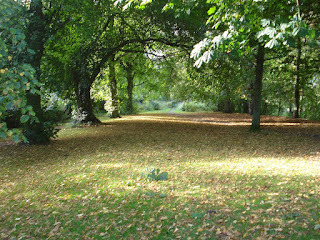Jen Black's Blog, page 11
December 8, 2022
Every sex scene should include...
 Some people find writing sex easy some find it difficult.
Some people find writing sex easy some find it difficult. Things I need to remember or: every sex scene should:
a) advance the story
b) be a point of change for at least one of the characters.
c) Show the mind and heart set of the characters as well as what they see and do.
d) Actions reveal personalities and personalities can be revealed via actions.
e) What they seek must fit in the drive of the story as a whole
f) Sex is a dialogue between two minds.
Sometimes it helps to outline the same scene from the other person's point of view.
Always keep the tone and style of the story.
Be sure you know:
a) what each of your characters wants as they go into the scene,
b) what their point of change is, and
c) where they are at the end of said scene
I must remember to think of a sex scene as a point of mental and emotional change explained in physical terms. The action may well be similar to every other sex scene ever written, but the difference should be in my explanation of the character’s experience. And, of course, my writing style will also have a part to play.
December 3, 2022
That chapter was short....

Do you think about chapter breaks in novel writing?
I didn’t until I saw this piece on Emma Darwin’s Itchy Bitesized blog and started thinking about what I do.
I write until I think there’s an end of chapter coming up - a point where the story line is about to change. Most scenes come to an end naturally when there is no more to say without repeating what you’ve already said. On the other hand, I have occasionally written a long scene that goes across more than one chapter. I need not say that sometimes I love doing a cliffhanger ending to a chapter!
Usually I have (without looking to check, which is unwise!) a chapter containing two scenes, occasionally more. I prefer not to do this, but occasionally it just works that way. Of course, those scenes will be short.
There might be a change of location necessary, or I want to change the POV and if all the other things concur, then a new chapter is a simple way of achieving both those things.
In a long reading life, I would say chapters in general and particularly in genre fiction are now a lot shorter than they used to be. I can remember reading in bed at night (often under the covers) anxiously waiting for a chapter to end so I could switch off and go to sleep. For me, in my books, chapters average out at between three and four thousand words. When I first began a decade or so ago, they averaged about five thousand, but reading modern books has influenced me without my noticing the change.
November 25, 2022
"Put him out of her mind. "
 The Regency period was very short: nine years between 1811 and 1820, when the madness of King George III made him unfit to rule and his son stepped in as Regent.
The Regency period was very short: nine years between 1811 and 1820, when the madness of King George III made him unfit to rule and his son stepped in as Regent. The author who made the Regency World her own, or indeed invented that world, wrote stories based upon and around the upper classes, their social lives, carriages and clothes and etiquette. They have been incredibly popular since the 1950s. Her name was Georgette Heyer.
I’ve read one or two and enjoyed them. I’ve wondered if she made up all those phrases – a bag of moonshine, land a facer, in his altitudes
Heyer researched the period extensively and built up a library of a thousand reference books by the time she died. Her notes record things like how much candles cost in 1812 and it seems that authors who came after her used much of her writing as fact. Much of it can be checked today and probably more easily, thanks to Google, than when she did all those years ago.
My concern right now is how much of the language she used was real, and how much did she invent? I must ask the people who celebrate all thing Heyer on Twitter accounts such as the ones below. They may have the answer.
@georgettedaily Twitter account.
@HeyerSociety@MissGHeyer
“She decided that her wisest course would be to put him out of her mind. After reaching this conclusion she lay thinking about him until at last she fell asleep.”
November 17, 2022
Getting what she needs

My character (work-in-progress character, not me!) has to change from a sort of wild child/tomboy to a young Regency lady and I am pondering how best to do that.
I need to show her emotional and psychological changes and ensure the readers sees how she reacts differently to her new world.
Describing her thoughts could get boring unless I also manage to show how she sets about getting what she needs or wants. There should be a chain that connects how she begins to where she realises something she didn't know before or reaches a point where she does something she wouldn't have done before. If I can include some physical activity while she thinks, that would be good.
She should change in appearance as well as behaviour and I must remember it won’t happen overnight. She could be retrospective at one point, in which she would point up the change she is undergoing.
Her character's voice could be really strong in this sort of piece. If she does one thing and the reader would most likely choose another way of doing it, then Lizzy should begin to feel real to the reader
.
November 10, 2022
Saggy Middle, anyone?

I think I’ve reached that place that writers call a saggy middle. I understand it is aperennial problem. My characters have done so well, and fought all obstacles, but now – where do they go from here?
Stakes (in story telling at least) are those things that keep a reader reading. Without them, then the story sags and loses momentum.
Astory starts with a challenge to a characters' ideas and plans. They are forced intonew directions. But the character needs ever new challenges. Words like Then - but - therefore - but - then - but - therefore - but..."come to mind.
If you have more than one strand or thread, then they need to interweave in an interesting way. Each time you switch from one strand to another, the reader losesemotional involvement in one thread, and needs to pick up rather quickly on another.This can slow reading to a crawl. What? Who is this? What happened to the other person?Find a placewherea breather is sort of welcome but also promises Things are going to get Hairy when you turn the Page.
The big turning point needs to have things change for ever. In Pride and PrejudiceMr Darcy's first proposal to Elizabeth is such a turning point: she is offered a splendid marriage which will help both her and her sistersand she turns it down.Why?
Elizabeth finds herself at the crux or the midpoint,where thetheme, present in the story right from the beginning, is tested. She made her decision and may well rue it. The very end of the story is where itis finally resolved.
November 5, 2022
To filter or not to filter?
 Have you heard of something called “filtering?”
Have you heard of something called “filtering?” I discovered a description of it this morning and laughed quietly to myself, for I have been trying to break the habit in my own writing for about a year now.
John Gardner describes “filtering” this way:
... the needless filtering of the image through some observing consciousness. The amateur writes: "Turning, she noticed two snakes fighting in among the rocks." Compare: "She turned. In among the rocks, two snakes were fighting ..." Generally speaking - though no laws are absolute in fiction - vividness urges that almost every occurrence of such phrases as "she noticed" and "she saw" be suppressed in favor of direct presentation of the thing see.
Janet Burroway explains: As a fiction-writer you will often be working through "some observing consciousness." Yet, when you step back and ask the readers to observe the observer - to look at rather than through the character - you start to tell-not-show, and rip us briefly out of the scene.
These days we are advised to Show, not Tell. So howwe clear out the filters becomes important. Having finally noticed this in re-editing my own books I am, to paraphrase Emma Darwin, at the point where “conscious craft has become intuitive craft.”
The more straightforward, physical filter-words like "saw", "noticed", "looked round" "watched" "observed" are the first ones to look for, and then you can chase down phrases like "I remembered that", "she wondered if", "they decided that", "we considered whether" "he thought about", "He thought back to when", "to her it seemed as if" and if you think of more, follow them, too. You may be able to take out a great many of them and thus improve your writing. I know it improves mine!
October 28, 2022
People talk of Gothic novels - aka Northanger Abbey – but...

People talk of Gothic novels - aka Northanger Abbey – but what is a gothic setting? Dracula’s castle is gothic because it helps invoke gothic themes. Take architecture, add in claustrophobia and creeping dread, toss in distance from civilisation, a prison-like atmosphere and you are almost there.
Old places, and isolated wilderness helps to set the scene. Almost any castle will do, especially if it is partially ruined and has a dungeon or better yet – a locked door. How about an ancient mansion, a hunting lodge, or dilapidated chateau? There are plenty of ruined cottages scattered about the norther landscape.
Take something familiar and twist it. A doll isn’t gothic-scary, but a doll that inexplicably appears on your bedside table might be. How did it get there? Who put it there?
Signing the contacts on some property isn’t scary, but doing so in Transylvania might be, especially if a mysterious and reclusive count lived there.
Historical fiction is based in reality. In Gothic horror, magic and monsters and things that go bump in the night might be real.
In a Gothic horror, the doll would be the ghost of a horribly murdered girl that now possesses the doll.
In historical fiction ghosts aren’t real and there will usually be a protagonist driven mad by the nasty doll shunted around by her wicked uncle.
I like writing about the Viking Age which tends to be action-packed and practical. But I am beginning to think along the lines of a chieftain’s hall in the middle of nowhere, with a murderer who stalks the corridors at night, leaving gruesome trophies behind!
Yes, I did read Beowulf at uni!
But add in dread, and snow them in over a brutal winter as they are picked off one by one…
October 21, 2022
Flicking through other blogs
 Mullion Headland
Mullion Headland
Every now and then I flick through the blogs of other writers and pick up some hints and tips to help me on my way. Today I learned that writing the opening line before you’ve finished the book is a waste of time.
I read on and found a first chapter should:
1. Introduce the Main Character.
2. Make us Want to Spend Time with that Character
3. Create an atmosphere from page 1
4. Hint at the Theme
5. Tell Us Where We Are. Home for geriatrics or Chatham House in 1832.
6. We need some conflict on page 1 but the major inciting incident can wait a little
7. What does Your Protagonist Want; one major goal (the main story arc) and a goal for each chapter. Great if you get both in chapter 1.
8. We need Major Characters with dialogue
As Anne R. Allen suggests at the end of her post, the urge to check my first chapter against this list is strong. My Regency heroine is escaping a mean guardian, runs into trouble and is rescued by a handsome young man all in chapter one. But do I have a theme? What does my heroine want, apart from escaping? I think she’s likeable (but I would, wouldn’t I?) but will readers find her entertaining?
All I can do is carry on to the end and then – only then – redesign the first chapter if I feel the need.
October 14, 2022
Talking Second Chances
Way back in 2018 I signed up to Mailchimp and put out a newsletter.
 For a while, it went well.
For a while, it went well.Then one day I could not get Mailchimp to co-operate with me, and I sort of abandoned the idea. Everybody seems to have an e-mail list these days, so I am trying again. You might notice there is a Sign Up now form over to the right of this post. I hope you will use it.
Mailchimp has retained the names who signed up in 2018 and happily sent off the new email to them, so there may be some weeding to do, but that is OK. I hope there will be new people who will sign up this time around. New additions to the list will receive a free e-Book and there will be snippets and chapters, scenes, and general news of what I am doing.
The pic today is of Halton Castle which features briefly in my story Fair Border Bride. I know the non-castle addition is 17th century, but I am sure the tower was in place in the 16th century. I must have a walk that way again and see how big the "cat "shaped hedge is now. Fifteen years is a long time and there may have been changes!
October 8, 2022
In the long run
 What with gardening and "tidying up" my books and covers, I'm a tad busy which is just as well as it helps to get over the big gap there is in our household once again. Those who've never had a dog cannot imagine how silent and empty the house is without that doggy presence,
What with gardening and "tidying up" my books and covers, I'm a tad busy which is just as well as it helps to get over the big gap there is in our household once again. Those who've never had a dog cannot imagine how silent and empty the house is without that doggy presence,I haven't gone for a walk since last Sunday, but I have been in the garden every day. Pruning overgrown buddleias and digging up crocosmia that has overtaken everything else in the vicinity. Next it will be the Michaelmas daisies, but at the moment they provide a wonderful contrast to the autumn colours of the Virginia creeper.
Next, we are planning to take down an apple tree that is getting far too big for the size of garden we have and only produces tiny little crab apples - I think it was a wild seed anyway! Also, a laburnum, for the same reason. We will still have another laburnum in a different part of the garden. It does look lovely when in bloom.
The garden will look very bare throughout the winter but will be beneficial in the long run.
NB The Elsdon Affair is free for a few days from today. Why not read and review?
Jen Black's Blog
- Jen Black's profile
- 6 followers



